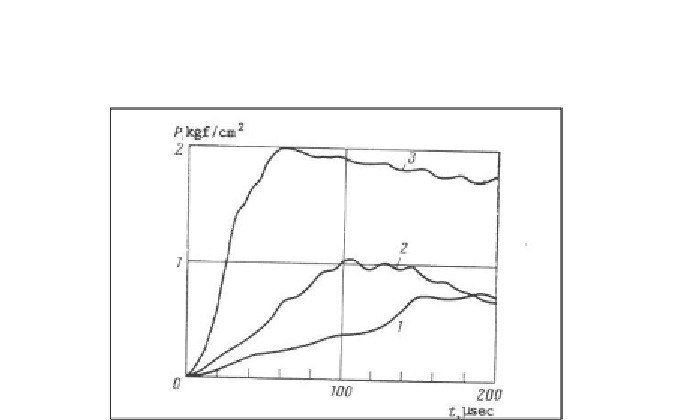Biomedical Engineering Reference
In-Depth Information
thickness of the Mylar burst disc was not provided. In Figure 18, curve three
represents data for the Mylar burst disc, while the curves labeled with numbers
one and two represent rubber burst discs (Baksht and Fedyunin, 1989).
Reproduced with permission. Copyright retained by Inderscience Publishers.
Figure 18. Pressure Rise vs. Time for Burst Discs.
2.4. Summary of the Literature Review
The study of particle impacts into substrates with then intention of
developing surface coatings dates back to the beginning of the process now
known as thermal spray, first developed by Max Ulrich Schoop and filed for
patent in 1909 (Kogelschatz, 2004). Schoop realized that by firing molten
metal particles at high speeds into a substrate, it was possible to produce a
surface coating of the particle material onto the substrate. This first process
was of the type known as molten metal flame spray, and soon thereafter
Schoop began refining processes and further developed powder and wire
metallizing (Hermanek, 2002). Since the inception of this technology,
refinements and improvements have been made, as well as new methods to
achieve surface coating using thermal spray. All of these methods have in
common the input of heat into the process to accelerate the particles in molten
or semi-molten form.
In the 1980s particle impacts at low temperature became an area of
interest. Anatolli Papyrin (2001) discovered the possibility of depositing
particles to create surface coatings in the solid state. This became an area of
interest because particle microstructures can remain intact after forming the

